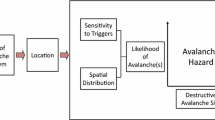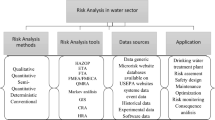Abstract
In this paper, a new generalized sensitivity analysis is developed with a focus on parameter interaction. The proposed method is developed to apply to complex reservoir systems. Most critical in many engineering applications is to find which model parameters and parameter combinations have a significant impact on the decision variables. There are many types of parameters used in reservoir modeling, e.g., geophysical, geological and engineering. Some parameters are continuous, others discrete, and others have no numerical value and are scenario-based. The proposed generalized sensitivity analysis approach classifies the response/decision variables into a limited set of discrete classes. The analysis is based on the following principle: if the parameter frequency distribution is the same in each class, then the model response is insensitive to the parameter, while differences in the frequency distributions indicate that the model response is sensitive to the parameter. Based on this simple idea, a new general measure of sensitivity is developed. This sensitivity measure quantifies the sensitivity to parameter interactions, and incorporates the possibility that these interactions can be asymmetric for complex reservoir modeling. The approach is illustrated using a case study of a West Africa offshore oil reservoir.











Similar content being viewed by others
References
Bastidas LA, Gupta HV, Sorooshian S, Shuttleworth WJ, Zhang ZL (1999) Sensitivity analysis of a land surface scheme using multicriteria methods. J Geophys Res 104(D16):19481–19490
Batycky RP, Blunt MJ, Thiele MR (1997) A 3D field-scale streamline-based reservoir simulator. SPE Reserv Eng 12(4):246–254
Beven KJ, Binley A (1992) The future of distributed models: model calibration and uncertainty prediction. Hydrol Process 6(3):279–298
Caers JK (2005) Petroleum geostatistics. Society of Petroleum Engineers
Corder GW, Foreman DI (2009) Nonparametric statistics for non-statisticians: a step-by-step approach. Wiley, New Jersey
Cox DR (1984) Interaction. Intern Stat Rev 52(1):1–24
Davies DL, Bouldin DW (1979) A cluster separation measure. IEEE Trans Pattern Anal Mach Intell PAMI-1(2):224–227
Dejean JP, Blanc G (1999) Managing uncertainties on production predictions using integrated statistical methods. Proc. of the (1999) SPE ATCE, Houston. doi:10.2118/56696-MS
Efron B, Tibshirani R (1993) An introduction to the bootstrap. Chapman Hall, New York
Helton JC, Davis FJ (2003) Latin hypercube sampling and the propagation of uncertainty in analyses of complex systems. Reliab Eng Syst Safe 81(1):1175–1209
Kalla S, White CD (2007) Efficient design of reservoir simulation studies for development and optimization. SPE Reserv Eval Eng 10(6):629–637
Myers RH, Montgomery DC (2002) Response surface methodology. Wiley, New York
Pappenberger F, Beven KJ, Ratto M, Matgen P (2008) Multi-method global sensitivity analysis of flood inundation models. Adv Water Resour 31(1):1–14
Rousseeuw PJ (1987) Silhouettes: a graphical aid to the interpretation and validation of cluster analysis. J Comput Appl Math 20:53–65
Saltelli A, Chan K, Scott EM (eds) (2000) Sensitivity analysis. Wiley, New York
Scheidt C, Caers JK (2009a) Representing spatial uncertainty using distances and kernels. Math Geosci 41(4):397–419
Scheidt C, Caers JK (2009b) Uncertainty quantification in reservoir performance using distances and kernel methods—application to a West-Africa deepwater turbidite reservoir. SPE J 14(4):680–692
Spear RC, Hornberger GM (1980) Eutrophication in peel inlet—II. Identification of critical uncertainties via generalized sensitivity analysis. Water Res 14(1):43–49
Spear RC, Grieb TM, Shang N (1994) Parameter uncertainty and interaction in complex environmental models. Water Resour Res 30(11):3159–3169
Westfall PH, Young SS (1993) Resampling-based multiple testing: examples and methods for p-value adjustment. Wiley, New York
White CD, Willis BJ, Narayanan K, Dutton SP (2001) Identifying and estimating significant geologic parameters with experimental design. SPE J 6(3):311–324
Zabalza-Mezghani I, Manceau E, Feraille M, Jourdan A (2004) Uncertainty management: from geological scenarios to production scheme optimization. J Pet Sci Eng 44(1–2):11–25
Acknowledgments
The authors would like to thank Chevron for permission to use the WCA model, and Alexandre Boucher of AR2Tech for his support in the use of SGems for modeling the petrophysical properties of WCA. The authors would also like to thank the sponsors of the Streamsim/Stanford HM JIP, the Swiss National Science Foundation (ENSEMBLE project), and the Stanford Center for Reservoir Forecasting for their financial support. The Matlab code for DGSA is available at https://github.com/SCRFpublic.
Author information
Authors and Affiliations
Corresponding author
Rights and permissions
About this article
Cite this article
Fenwick, D., Scheidt, C. & Caers, J. Quantifying Asymmetric Parameter Interactions in Sensitivity Analysis: Application to Reservoir Modeling. Math Geosci 46, 493–511 (2014). https://doi.org/10.1007/s11004-014-9530-5
Received:
Accepted:
Published:
Issue Date:
DOI: https://doi.org/10.1007/s11004-014-9530-5




